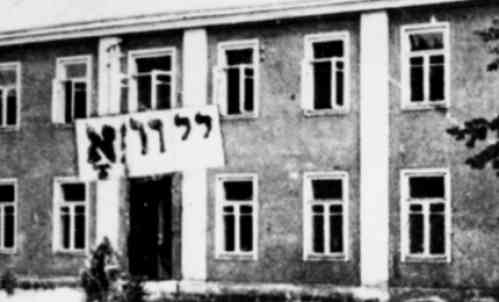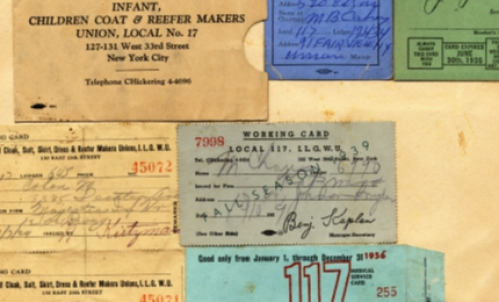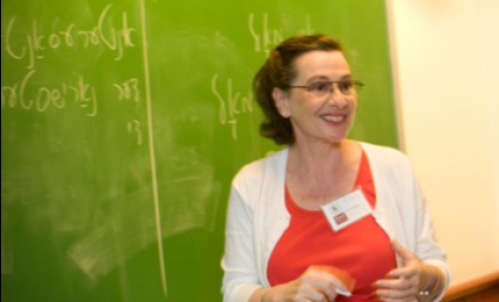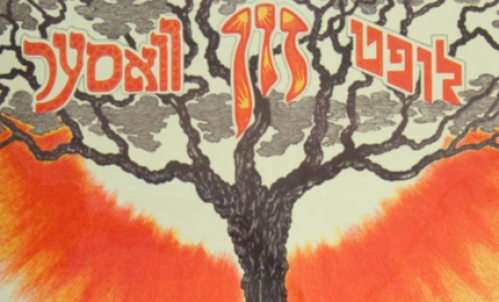2025 Winter Program
Course List · January 7 – 24, 2025
Outside the Synagogue: Traditional Songs and Nigunim of Eastern Yiddish Speakers
Instructor: Michael Lukin
Eastern European Jews created several distinctive musical repertoires that flourished from early modernity until the Holocaust. Among the most prominent were Yiddish folk songs, klezmer instrumental music, cantorial singing, paraliturgical songs, and, from the 18th century, Hasidic nigunim. Over this prolonged period, these genres developed interconnections, established their own ideals of beauty, and became the constant soundtrack of Jewish life. Marked by conservatism and internal inspirations, all traditional repertoires creatively adapted older Western European elements, absorbed before Ashkenazi Jews immigrated to Central and Eastern Europe (i.e., before the 16th–17th centuries), to their Slavic surroundings.
This course will focus primarily on two vocal repertoires that offer insight into this rich musical landscape: Yiddish folk songs and old Hasidic wordless nigunim. Through guided listening to rare archival recordings and discussions of the cultural contexts of songs and nigunim, we will explore their various genres, including ballads, folk paraphrases, cumulative songs, lullabies, lyric songs, and “cleaving nigunim,” as well as dance, march, and joy-nigunim. A close acquaintance with this creativity, often overlooked in the scholarship on the cultural history of Eastern Yiddish speakers, will deepen our understanding of their inner worlds, their attitudes toward the past and present, and their unspoken perceptions of beauty and emotional expression.
In the Aftermath of the National Origins Act, 1924-1928
Instructor: Hasia Diner
1924 heralded a transformative moment in American and American Jewish history. In the passage of the National Origins Act, the U.S. Congress ended the open, free, and relatively unregulated influx of Europeans seeking to come to the United States and settle there. Jews, like so many other Europeans, had pinned their hope on America since 1820 as a place to find new homes and make a better living. The act left its mark on all European immigrant groups and hastened a process by which their children and grandchildren experienced a sped-up process of integration into American society.
This course, comprised of six sessions, examines some landmark moments in the half decade between the passage of the National Origins Act and the 1929 onset of the Great Depression. Each landmark—a few for each year under consideration—exemplifies something new, important, and transformative, shaping Jewish life in America.
Encounters with Mephistopheles
Instructor: Jonathan Brent
This class will explore the ultimate source of evil as it has been visualized and understood in the 20th century by two writers whose works evolved out of their immediate experiences with Nazi totalitarianism.
We will read two works of fiction—one long and one short—that explore this subject in radically different ways—one by a German securely domiciled in America in 1943, the other, by a Czech Jew who, as a teenager, found himself in Theresienstadt before being sent to Auschwitz. Doctor Faustus, by Thomas Mann, contains an interview with Beelzebub; Night and Hope, by Arnošt Lustig, depicts the true evil as something terrifyingly invisible in the horrors of the “model” Nazi concentration camp. These visions collide but do not cancel each other out in the history of the 20th century.
Today, colonial and post-colonial history is thought by many, especially within academia, to embody the ultimate evil of our time. Alternatively, in contemporary film and popular fiction, the devil has usually been portrayed as simply an ancient evil (e.g., “The Exorcist,” “The Omen,” “Rosemary’s Baby,” etc.); but Mann and Lustig link their representations of the devil to quite other factors and invite us to a deeper reflection on the nature of this ultimate evil as we collectively drive into the conflicts and catastrophes of the 21st Century.
Depending on how quickly we can move through the two main texts, we may (as I hope) be able to reserve some time for a consideration two additional texts that represent Soviet reality, One Day in the Life of Ivan Denisovich, and The Master and Margarita.
Desire in Yiddish Literature
Instructor: Anita Norich
“Not to have is the beginning of desire,” wrote Wallace Stevens. But what do Yiddish writers want? What does “desire” mean to a Yiddish writer? The object of desire may be a person, but it can also be a thing, an idea, an art form, and more. We will read a range of familiar and unfamiliar Yiddish stories and poems—all in English translation—that consider how Yiddish writers responded to the social and political issues of their day: emigration/immigration, various forms of nationalism, socialism, religious belief, and rejection of religious observance. We’ll choose from among these authors: Sh. Y. Abramovitch, Tsilye Dropkin, Yankev Glatshteyn, Moyshe-Leyb Halpern, H. Leivick, Anna Margolin, Kadya Molodovsky, Y.L. Peretz, Israel Joshua Singer, and Malka Heifetz Tussman.
Entertaining America: Jews and Hollywood
Instructor: J. Hoberman
Immigrant Jews mainly from Eastern Europe, their children and grandchildren, played an extraordinary role in the creation of the American motion picture industry. This five-session course will explore the relationship between Jews and Hollywood, as producers, artists, and symbolic figures. Subjects include the origin of Hollywood, the casting of Jews as “oriental” Others, assimilation, nativism, anti-fascism, the Red Scare, and Jewish comedy. Films to discuss may include The Jazz Singer, The Great Dictator, Gentleman’s Agreement, Body and Soul, and more.
Whitewash: Holocaust Distortion in Poland and Beyond
Instructor: Jan Grabowski
Since the end of World War II, the commemoration and the history of the Holocaust have entered the heart of political struggles in Poland. In order to defend the “good name of the nation,” Polish authorities created institutions and legislated laws intended to enforce the official, state-approved version of history. This narrative, which shifts the focus away from the Jewish victims of the Shoah and places it on Righteous gentiles, real or imagined, has been well-received by the Polish society and, over the decades, helped to distort the history of the Jewish catastrophe.
It is within this context that old antisemitic tropes have come alive and acquired new currency. This unprecedented state-sponsored assault on the memory of the Shoah is known today as Holocaust distortion, a particularly insidious brand of Holocaust denial. The course will shed light on the origins of the current situation as well as its impact on Holocaust memory and Holocaust education in Poland, Europe, and beyond.
Making and Unmaking Jews in our Post-Pandemic Age of Antisemitism
Instructor: Sander Gilman
In 1986, Sander Gilman published Jewish Self-Hatred, one of the first studies of the cultural phenomenon of self-hatred among European Jews from the medieval period to the 20th century. By the beginning of 2024, new anxieties about the world and about Jewishness arose as the decades-long struggle for regional power and existence in the Middle East had begun to take on new, yet vaguely familiar contours, and Jews, not matter how defined, came (again, still?) to be the global focus of attention, and yes, even among Jews themselves. Suddenly, the term, “Jewish Self-Hatred,” which had been marginal in the debates about who is “authentically” Jewish, had again become central.
In this course, Gilman will continue his discussion of the ever-shifting meaning of being a Jew in our contemporary debates about antisemitism, looking at the continuities and discontinuities both among those who define themselves as Jewish and those who seek to define Jews, both from within and without. The sessions will reflect the depth of his scholarship on these topics, which he has been writing about for more than half a century, as well as what he feels there is still to learn about a range of topics, from The Jew’s Body (1991) to Cosmopolitanisms and the Jews (2017) and beyond.
Jewish Languages
Instructor: Ilan Stavans
What constitutes a Jewish language? Why have some developed more than others? When and where do Jewish languages emerge? What kind of development do they have? And how do Jewish languages die, if and when they do? Similarly, what effects do Jews have on non-Jewish languages, from standardized ones like English, Spanish, and Russian to dialects and “auxiliary” languages such as Esperanto? And in what way are Jewish languages connected with nationhood or the lack thereof? Do Jewish languages preserve tradition in unique ways? The course will tackle these and adjacent questions by studying literary (poems, short stories, essays, recipes, memoirs), political (speeches), and lexicographic texts (dictionary pages, personal correspondence, oral histories) across time and space from the Destruction of the First Temple in Jerusalem to the present.
Jewish Intellectuals and the Birth of the Nuclear Era
Instructor: Alex Wellerstein
Despite their minority status, intellectuals, scientists, and strategists of Jewish descent had an outsized impact on many key historical events and debates in the history of nuclear weapons during World War II and the Cold War. Beginning with the rise of Jewish prominence in theoretical physics in the early 1900s, the course tracks the key figures, ethical debates, and geopolitical influences of Jewish scientists on the creation, proliferation, and plans for the use of nuclear weapons.
Topics will include: the pivotal role of Jewish physicists in the origins of the American and British nuclear programs during World War II; the ethical, moral, and political challenges faced by figures like J. Robert Oppenheimer; the contrasting worldviews of Edward Teller and Leo Szilard in the early Cold War; and the role that Jewish intellectuals played in both planning for and resisting nuclear war in the later Cold War.
The course will also examine the intersection of Jewish identity, the Holocaust, and the existential threat posed by nuclear war, as well as the involvement of Jewish figures in Israel's nuclear program and its implications for global non-proliferation efforts. Ultimately, the course will be exploring why Jewish thought and experiences—particularly those shaped by persecution, displacement, and survival—had a disproportionate impact on some of the most consequential developments of the atomic age, shaping both the scientific community and the ethical discourse surrounding nuclear weapons.




